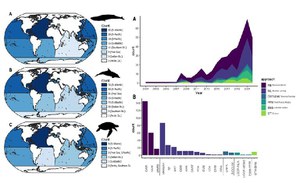A Review of the Available Tools for Identifying Key Areas for Cetaceans and Marine Turtles: A New Study by ISPRA and the University of Rome La Sapienza
Cetaceans and turtles travel great distances in the ocean and, since they often remain below the surface, gathering data about them is challenging. To address this, marine biologists frequently use species distribution models, essential mathematical tools that help predict the distribution of marine animals even in areas lacking data. To create these models, three fundamental components are necessary: species presence data, environmental data, an algorithm that describes the relationship between the species and its habitat.
Many algorithms are available, and selecting the most appropriate one is often difficult. ISPRA and the University of Rome La Sapienza conducted a comprehensive review of global scientific literature to analyze the most popular models used to identify key areas for cetaceans and marine turtles. The aim is to identify the available tools to be used in similar future studies, particularly within the Life CONCEPTU MARIS project.
A systematic review of 295 articles highlighted an exponential increase in the use of these models over the years, although their application is more limited in the case of marine turtles. Traditional statistical models are the most commonly used, but machine learning-based models are gaining popularity due to their numerous advantages.
A significant limitation identified is the inadequate representation of information about prey presence in the models. In this regard, the Life CONCEPTU MARIS project will integrate this information through its multidisciplinary approach, combining visual observations with environmental eDNA techniques and stable isotopes analysis to gather data on the Giant of the Mediterranean and their prey.
The work is available at ‘Ecological Informatics’: https://doi.org/10.1016/j.ecoinf.2024.102700

